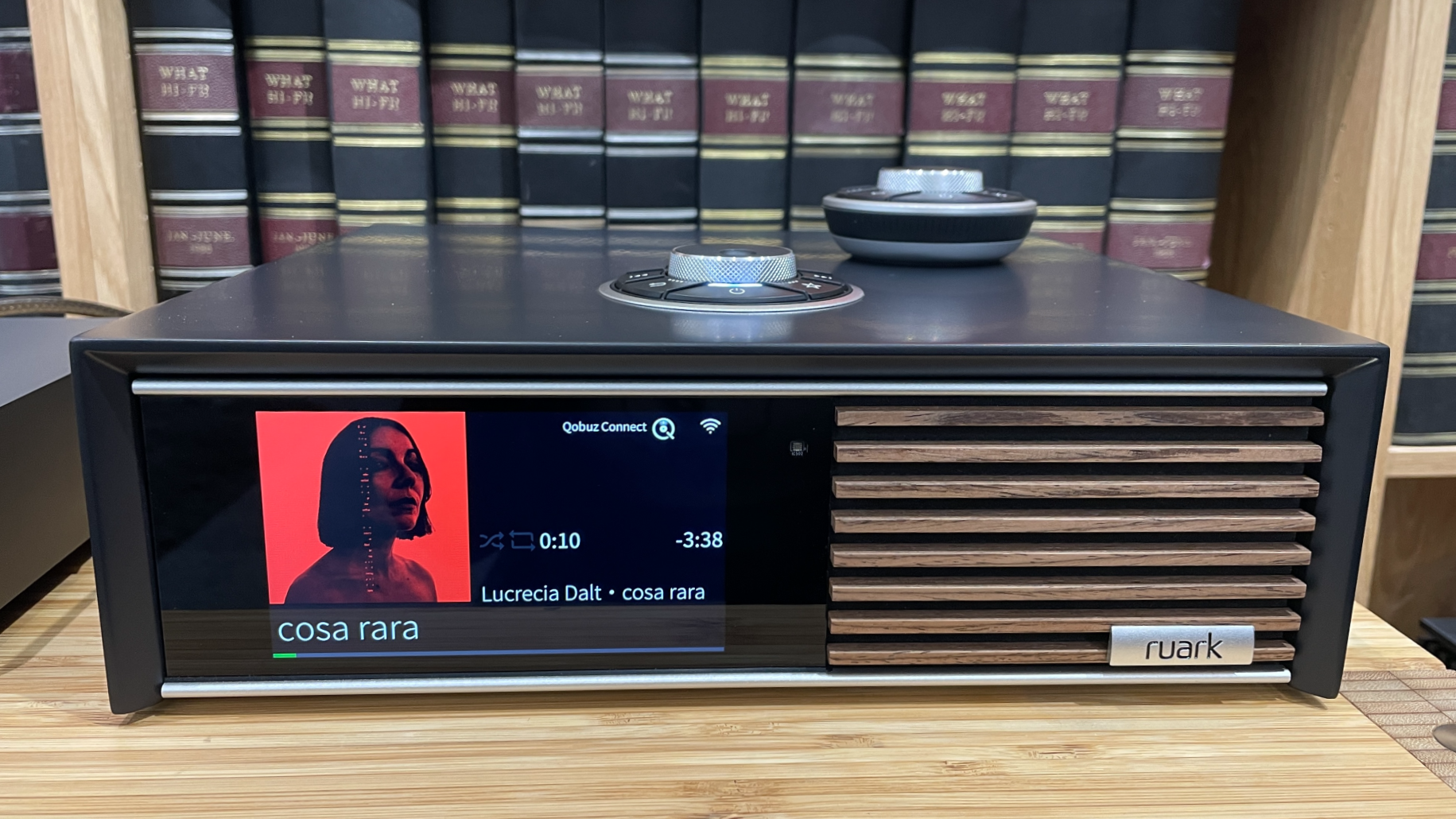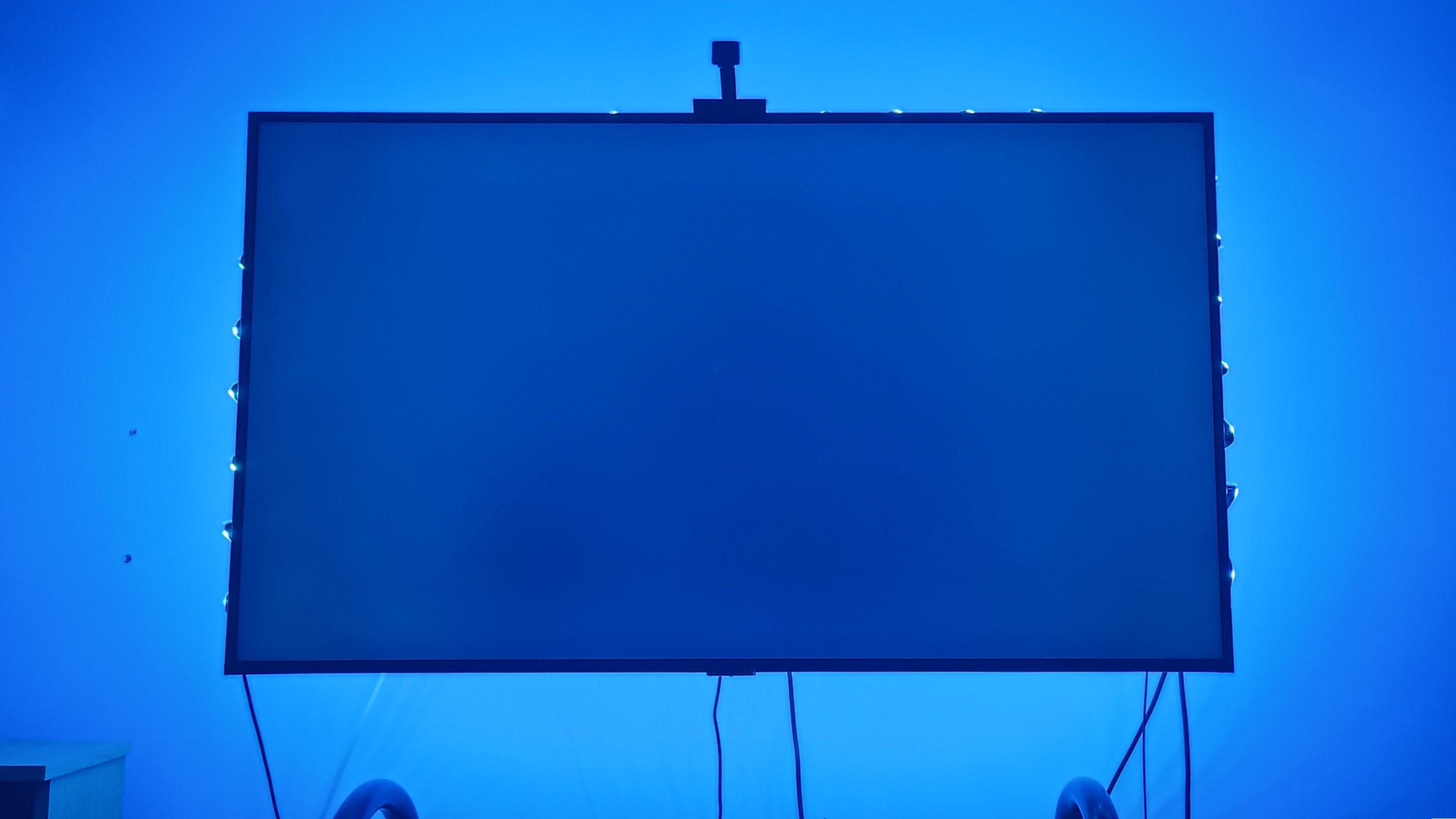What Hi-Fi? Verdict
Proving you can have it all, Ruark’s compact streaming amplifier delivers a wonderfully modern hi-fi performance in every way – gorgeous design, ample features, and excellent sound
Pros
- +
Engaging, dynamic sound
- +
Smooth, open and fluid presentation
- +
Ample streaming features and connectivity
- +
Elegant design and easy to use
Cons
- -
No dedicated app
- -
Sounds best with matching Sabre-R speakers
Why you can trust What Hi-Fi?
Streaming amplifiers are always a compromise. They have to combine amplification, DAC, preamp, multiple wireless streaming protocols and support for dozens of different music apps – all in one box. To make all these elements work seamlessly and deliver a great sound is a hard task.
Ruark Audio, however, has decades of experience in combining multiple functions in one box, to great success.
From powered desktop speakers with Bluetooth (MR1 Mk2), smart radios with streaming features (R1S, R2 Mk4) and all-in-one music systems (R410) – Ruark has already proven it can juggle multiple features while delivering great sound, stylish design and ease of use.
The Ruark Audio R610 streaming amplifier, then, should be a walk in the park, shouldn’t it?
Build & design
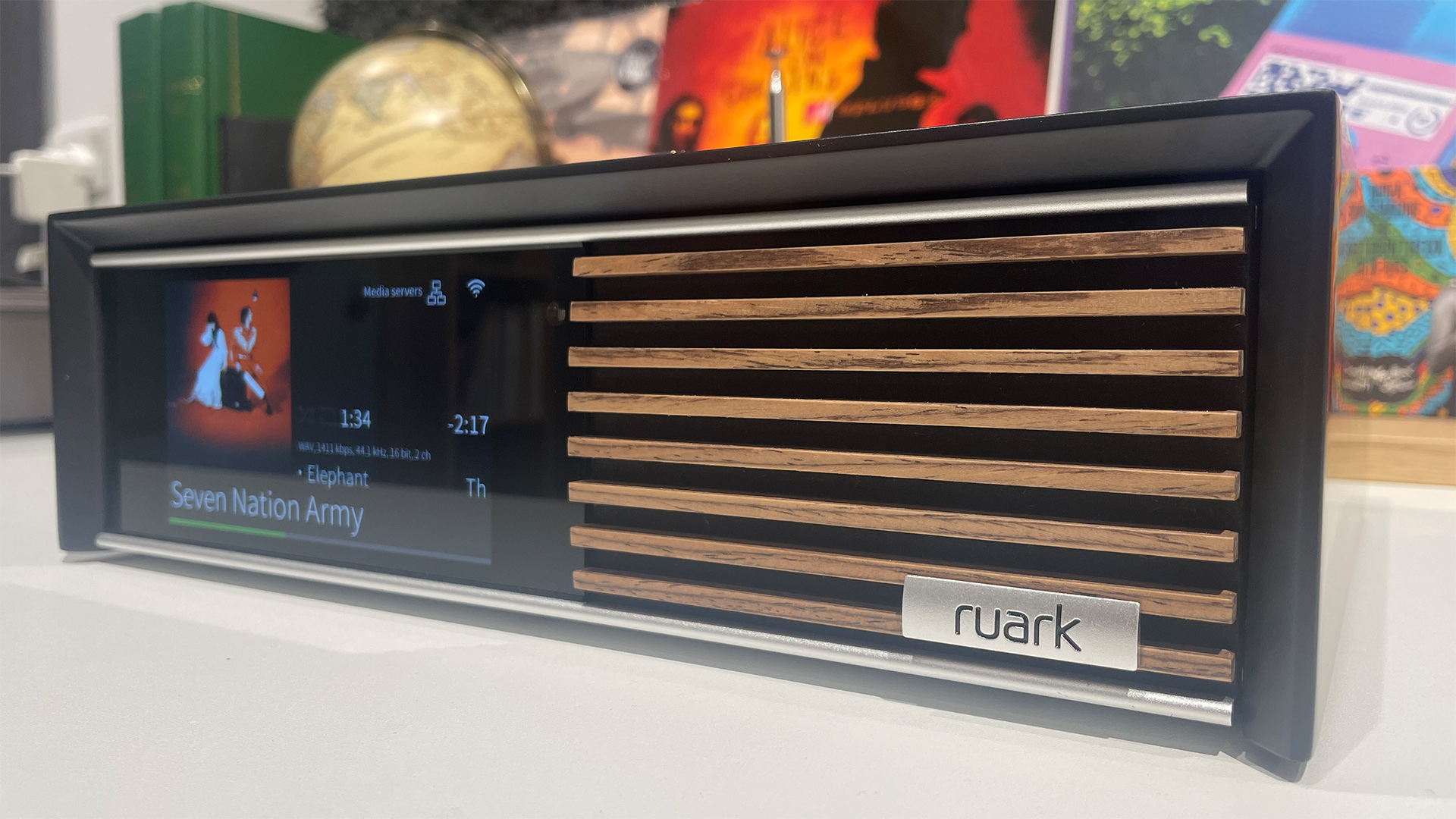
Unusually for a Ruark product, the R610 doesn’t include any speaker elements. It’s all electronics.
Inside, the R610 features Class D amplification with 75 watts of power per channel, and a Burr Brown DAC that supports hi-res files up to 32-bit/384kHz.
High-quality components are used, as well as a switch mode power supply that delivers efficient and optimised power to the system. It even sports a moving magnet phono stage, while the streaming platform is identical to the one we experienced in the five-star R410 all-in-one system.
The latest hi-fi, home cinema and tech news, reviews, buying advice and deals, direct to your inbox.
Not unusually for a Ruark product, the R610 looks stunning. A classy design with a high standard of build quality, this “music console” (as Ruark calls it) wouldn’t look out of place in any interior.

The handcrafted slatted wood grilles and metal details on the front – also seen in fellow R100 series products, including the matching Sabre-R speakers – are elegant, and the whole unit is beautifully made.
The large, five-inch, full colour TFT display screen is gorgeous to behold – clear, informative, easy to read and use, with good contrast for displaying album covers.
It’s not a touchscreen interface, but it gives the R610 that harmonious balance of modern and retro aesthetics in either of its two finish options.

Power 75W per channel
Streaming features Bluetooth 5.1 (aptX HD), AirPlay 2, Google Chromecast, DNLA, UPnP, Qobuz Connect, Tidal Connect, Spotify Connect, Amazon Music, Deezer, BBC Sounds, internet radio, FM and DAB/DAB+ tuners
Network Wi-fi, ethernet
Inputs HDMI eARC, Optical, RCA line level, Phono MM, USB-C
Outputs RCA line level, sub out
Headphone output? No
Max file resolution 32-bit/384kHz
Dimensions (hwd) 9.5 x 30 x 28cm
Weight 4.1kg
Finishes x 2 (fused walnut veneer, satin charcoal lacquer)
The compact footprint is also appealing. Coupled with the Sabre-R speakers that you can buy as a bundle, it is well-suited to smaller spaces.
The R610 is topped off with Ruark’s iconic RotoDial controller, a design which is also mimicked in the separate remote control you get in the box. This identical RotoDial handheld remote fits particularly neatly into our palms and is a well-designed, tactile way to use the R610.
Even better, it connects to the main unit via Bluetooth, not infrared, meaning you don’t need to have a direct line of sight to the unit to control it.
It takes a while to get used to all the icons and what each button does, but once you familiarise yourself with all the functions, it’s all plain sailing.

The buttons are swift and work smoothly, and the circular dial makes it very intuitive to scroll through all the sources and menu options.
Another great touch from Ruark is that a pair of 3m speaker cables are included in the box. This is unusual but wholly welcome – we don't normally see such premium-looking speaker cables included with a product.
It makes setting up your system, especially if this is your first hi-fi set-up and you aren’t au fait with traditional separates, quicker and easier as you don’t have to shop separately for speaker cables (which can start to get expensive).
The cables are nicely braided, are terminated with banana plugs and work well. This does also offer a good upgrade path as the R610’s performance did improve when we swapped them for a step-up set of speaker cables.
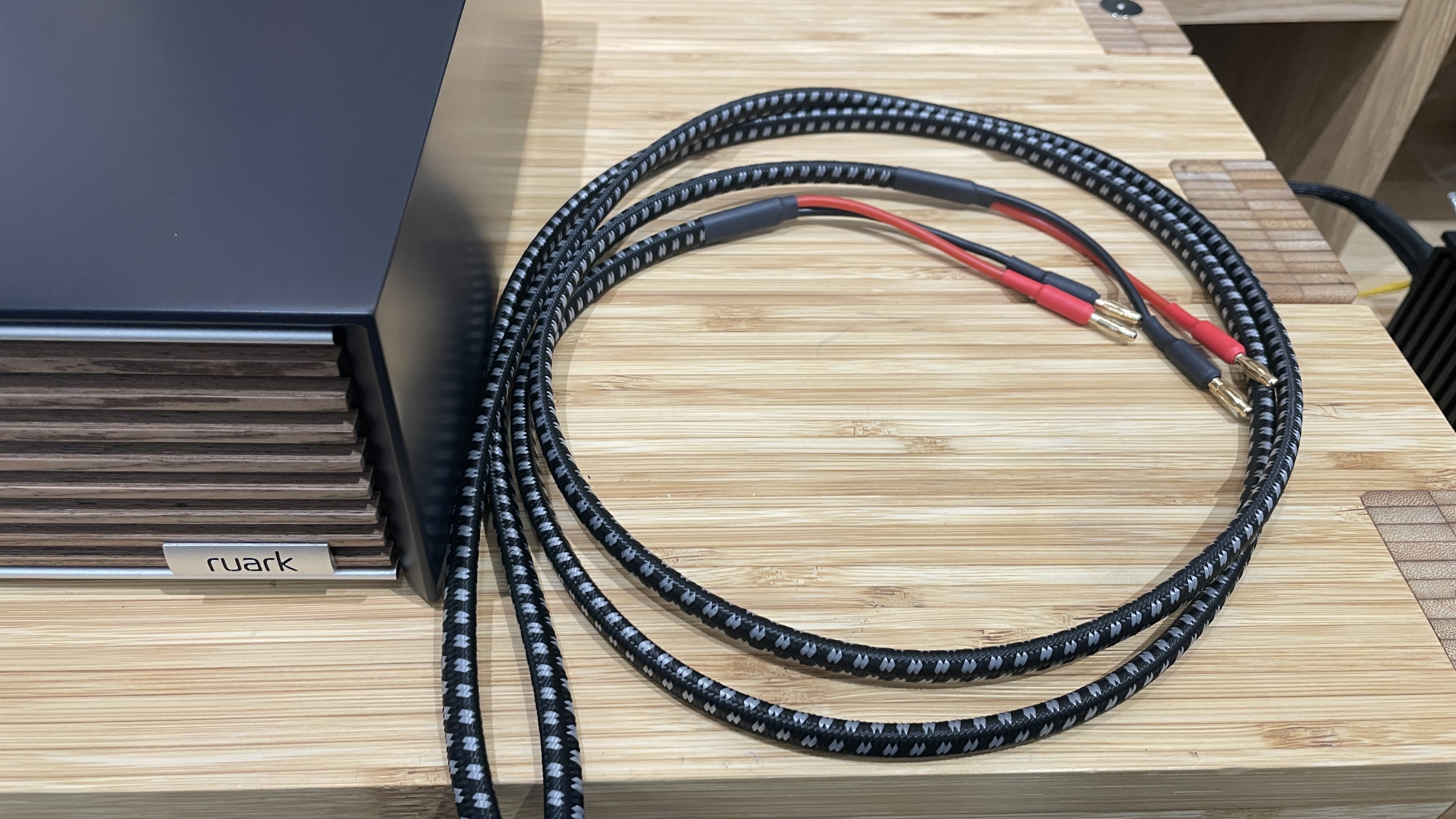
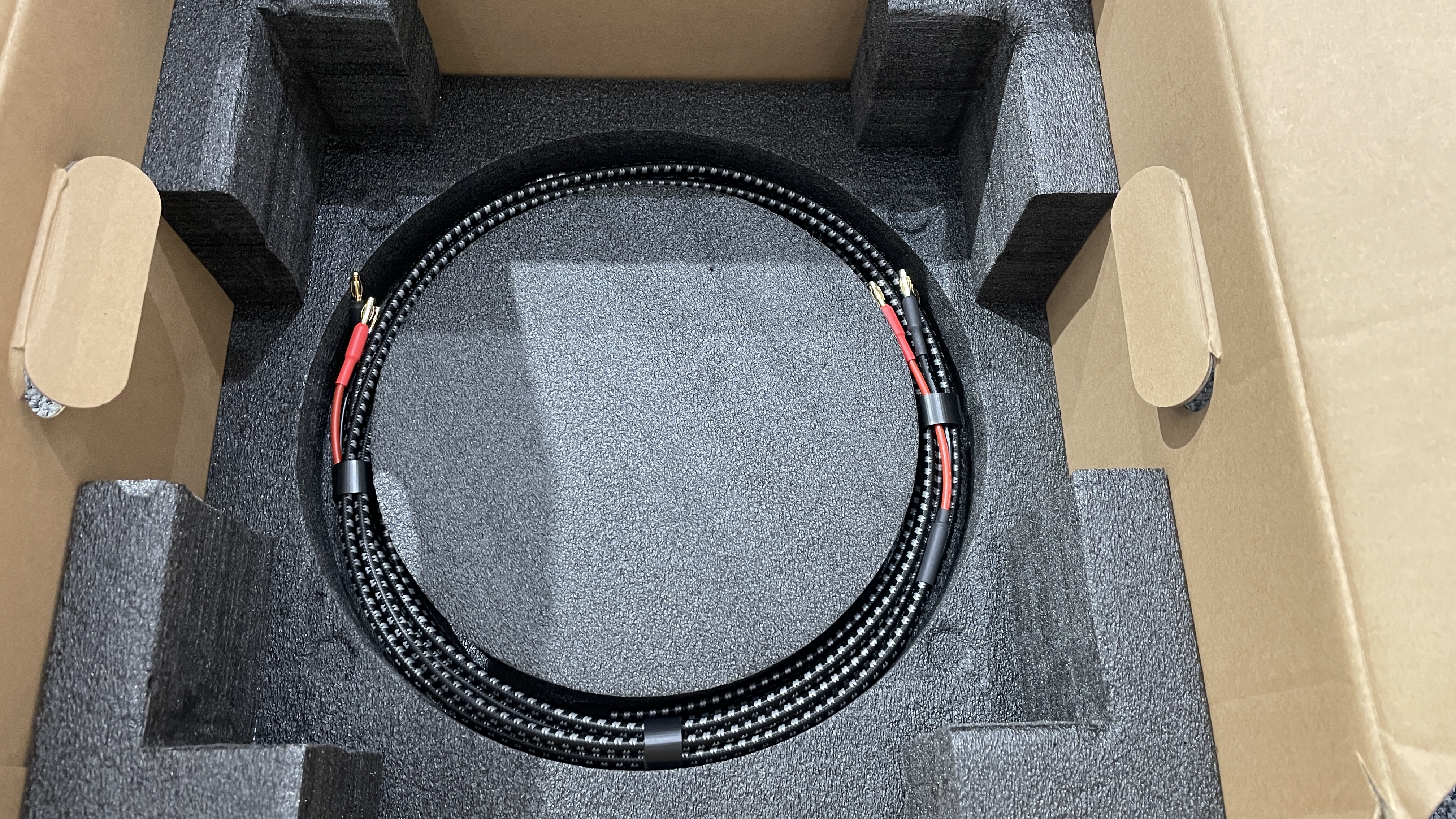
Features & connectivity
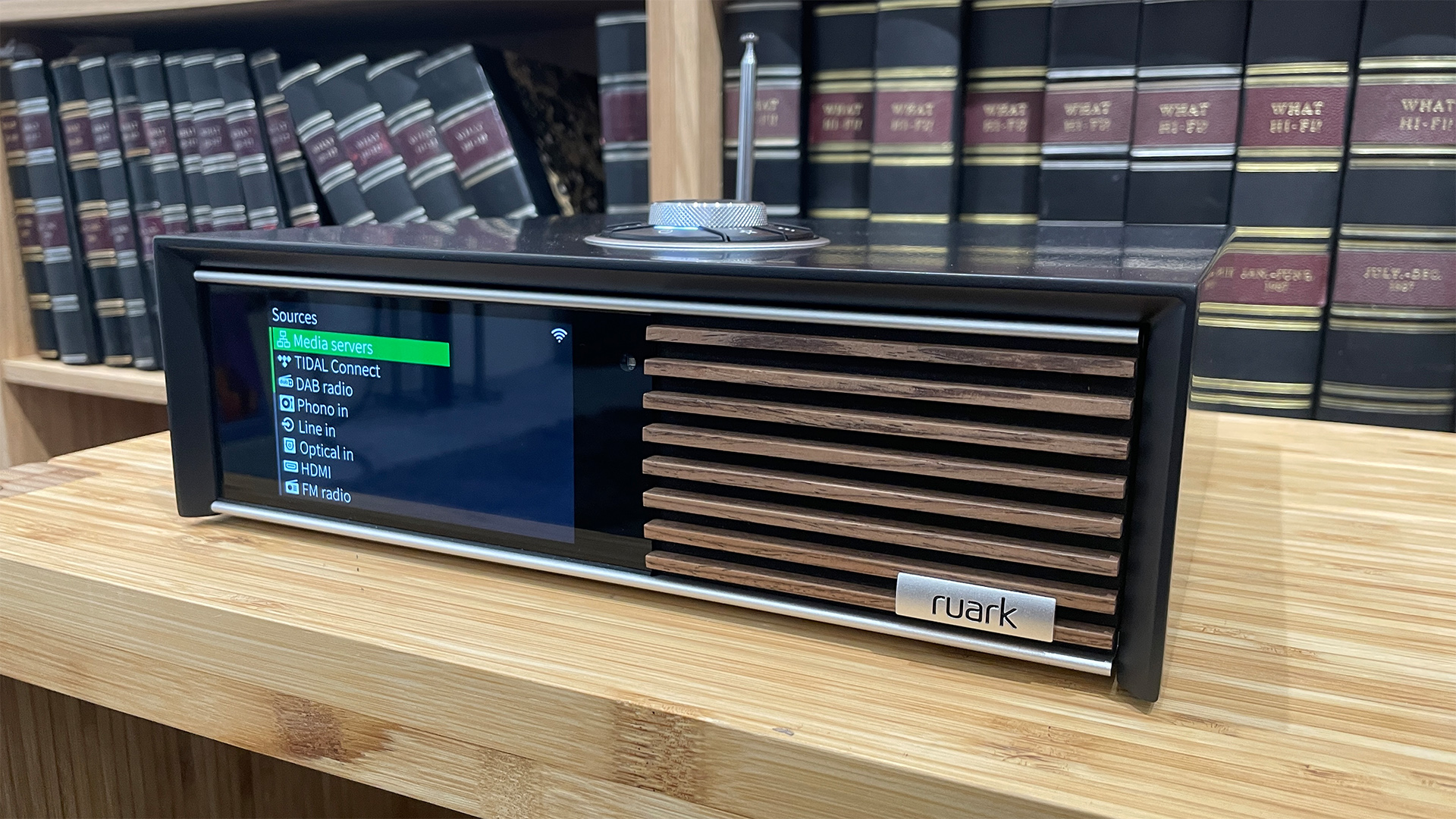
The R610 streaming amplifier is bursting at the seams with features. In terms of wireless streaming, all the popular protocols and latest apps are supported.
We started testing the R610 when Qobuz Connect launched in May, and the new feature worked without a hitch. Tidal Connect and Spotify Connect are also on the menu, as is support for Amazon Music and Deezer.
You can also opt to stream from your smart device using AirPlay 2, Chromecast or Bluetooth (connection is swift and simple), while DLNA and UPnP compatibility means you’ll be able to play through your digital music collection stored on media servers or NAS devices on the same network.
We tried both wi-fi and wired Ethernet connections, and they proved stable throughout our testing duration.
The Ruark R610 wears its radio heritage proudly, with FM and DAB/DAB+ radio tuners included alongside the usual internet radio stations. There is even built-in support for the BBC Sounds app.
You can save up to 20 presets on the R610, making your favourite playlists and stations easier to access.
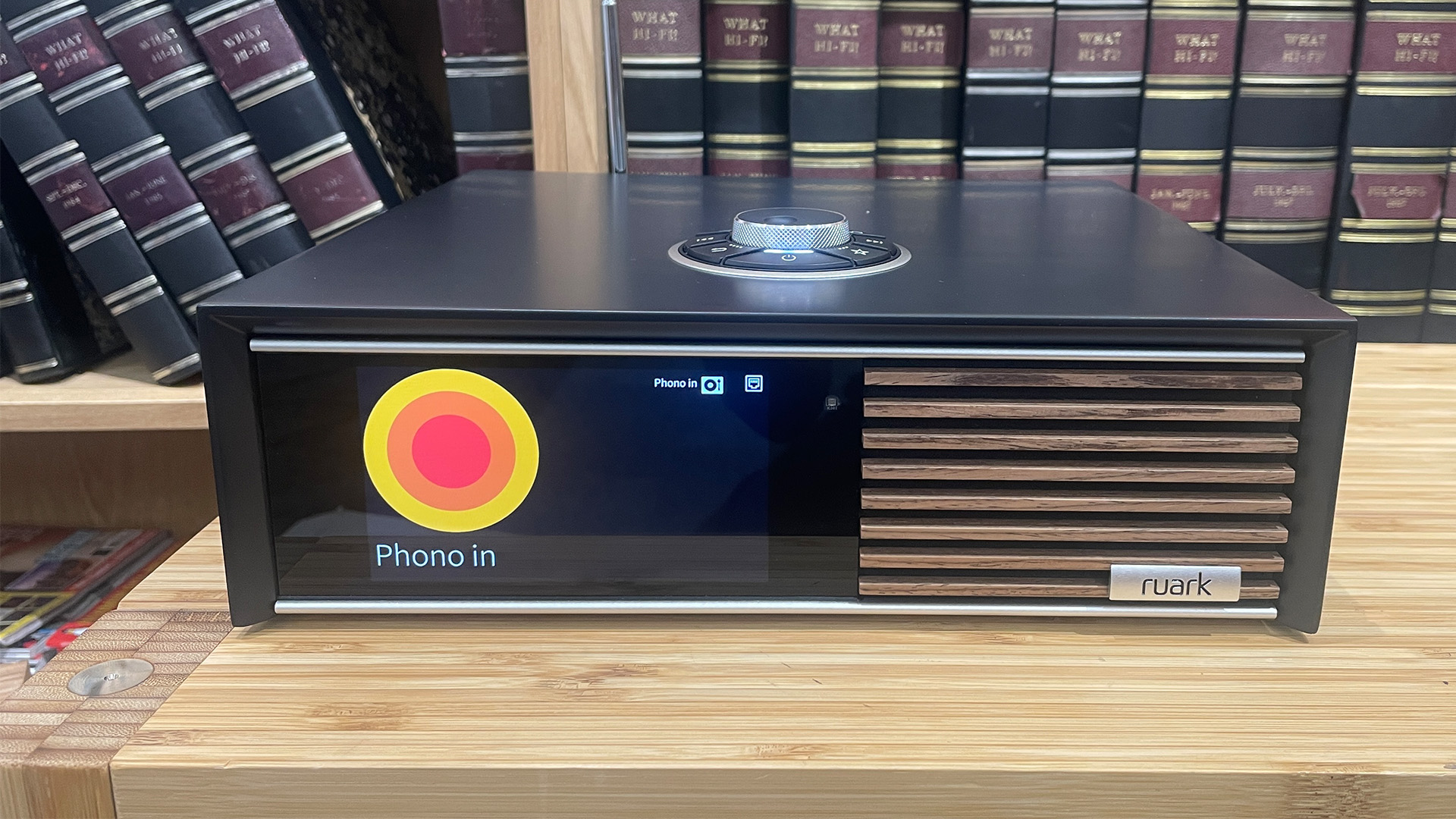
It’s worth noting at this point that there is no dedicated app here. This is unusual for a streaming amplifier, but the Ruark R610 is perfectly usable without one.
If using Qobuz, Tidal, Apple Music or BBC Sounds, the native app serves as your natural playback controller, while the R610 auto-senses if you want to stream via the Connect mode or AirPlay, for instance.
It’s when dealing with large music libraries that a tablet or smartphone interface feels necessary, so a third-party app such as M-Connect is recommended.
The R610 also isn’t laden with myriad settings and customisation options, as offered on the BluOS or WiiM streaming platform – so there isn’t much need for an app, really.
The R610’s menu settings are simple and offer straightforward options that are easy to select with the physical control buttons.
Ruark has also confirmed to us that new features should be added in October, which include the ability to hide sources that you don’t use, alarm clock functionality, and support for Bluetooth headphones playback.
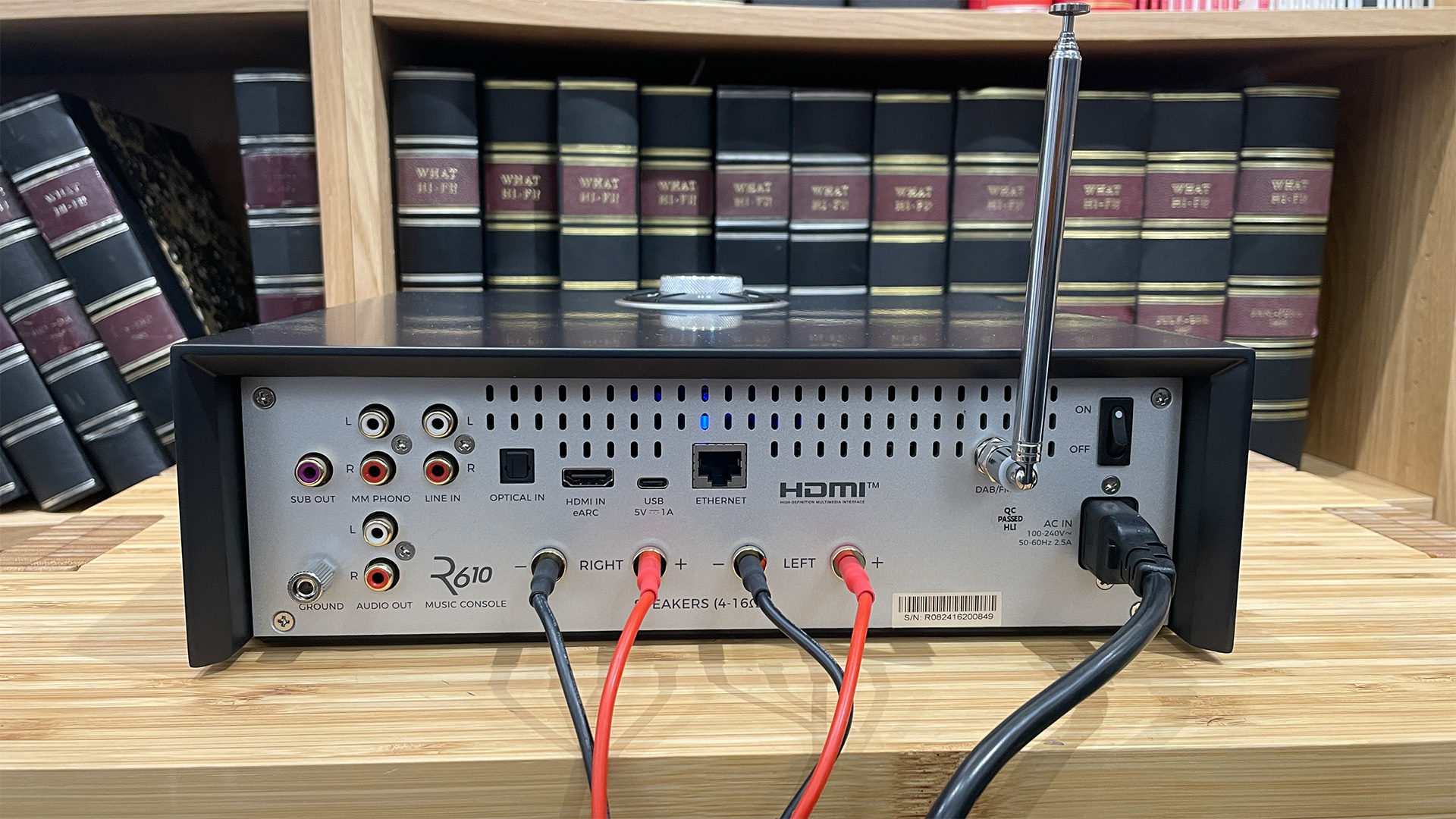
That’s it for the streaming side, but the R610 also packs plenty of physical connections. There is a rather good moving magnet phono stage for your turntable, an HDMI ARC input for connecting to TVs, along with digital optical and RCA analogue inputs.
There is also a UBC-C input that supports audio playback; this is also where you would plug in Ruark’s dedicated R-CD100 CD drive.
We didn’t have the R-CD100 at hand, but we used our reference Cyrus CDi CD player with both analogue and optical inputs, and our Rega Planar 3 RS Edition turntable was connected to the phono input as part of our listening.
The only hiccup we encountered during testing was when the two analogue inputs didn’t make a sound at first. A factory reset fixed this problem promptly, and we haven’t had any issues with the analogue section since.
Sound
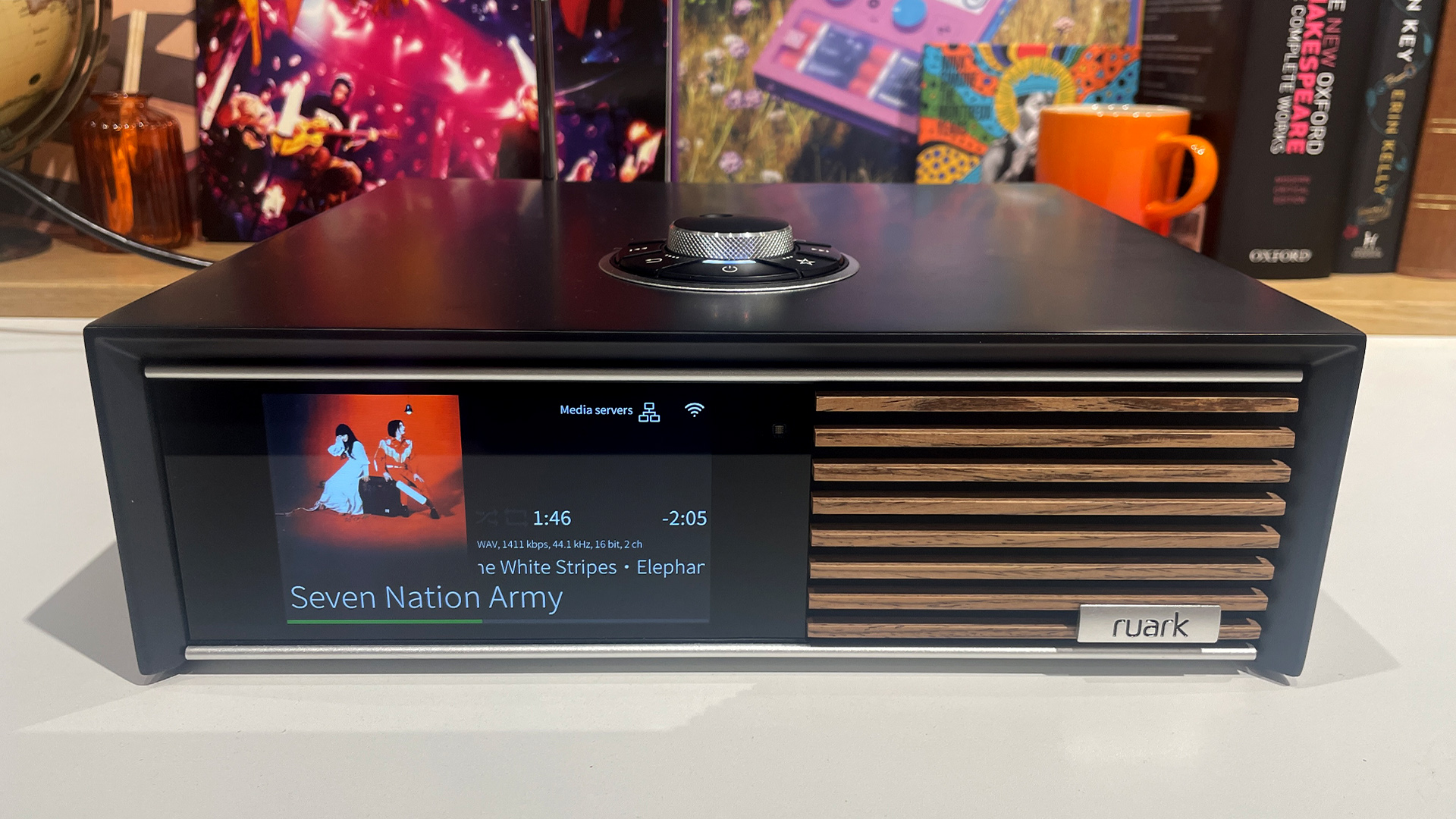
We start our R610 testing by connecting it to our reference Epos ES-7N standmount speakers, and we're met with a smooth, spacious and open sound.
It’s a dynamic and detailed presentation, allowing high frequencies to soar while keeping basslines in check. There is ample punch and impact to the low end, while a taut and agile sense of rhythm gets us fully in the groove of the song being played.
The bite and shine in the sharper edges of Fontaines D.C.’s Starburster is crisp and full of attitude, but it never sounds thin or harsh.
There is textural depth and body to the cello and piano in Agnes Obel’s The Curse, while the soundscape is layered. The R610 delivers a pleasing breadth of scale as orchestral pieces ebb and flow, with the sense of build-up towards a rousing crescendo coming through with a good amount of drama and weight.
We play through a little bit of everything from ’60s Dusty Springfield to ’70s Bowie, ’90s grunge rock to modern shiny pop, and the R610 takes it all in stride.
Piano notes glide across fluidly but with enough intent when fingertips hit ivory; Outkast’s frenetic energy in B.O.B. is relayed with verve and propulsive momentum; voices are conveyed with clarity and dynamic subtlety.
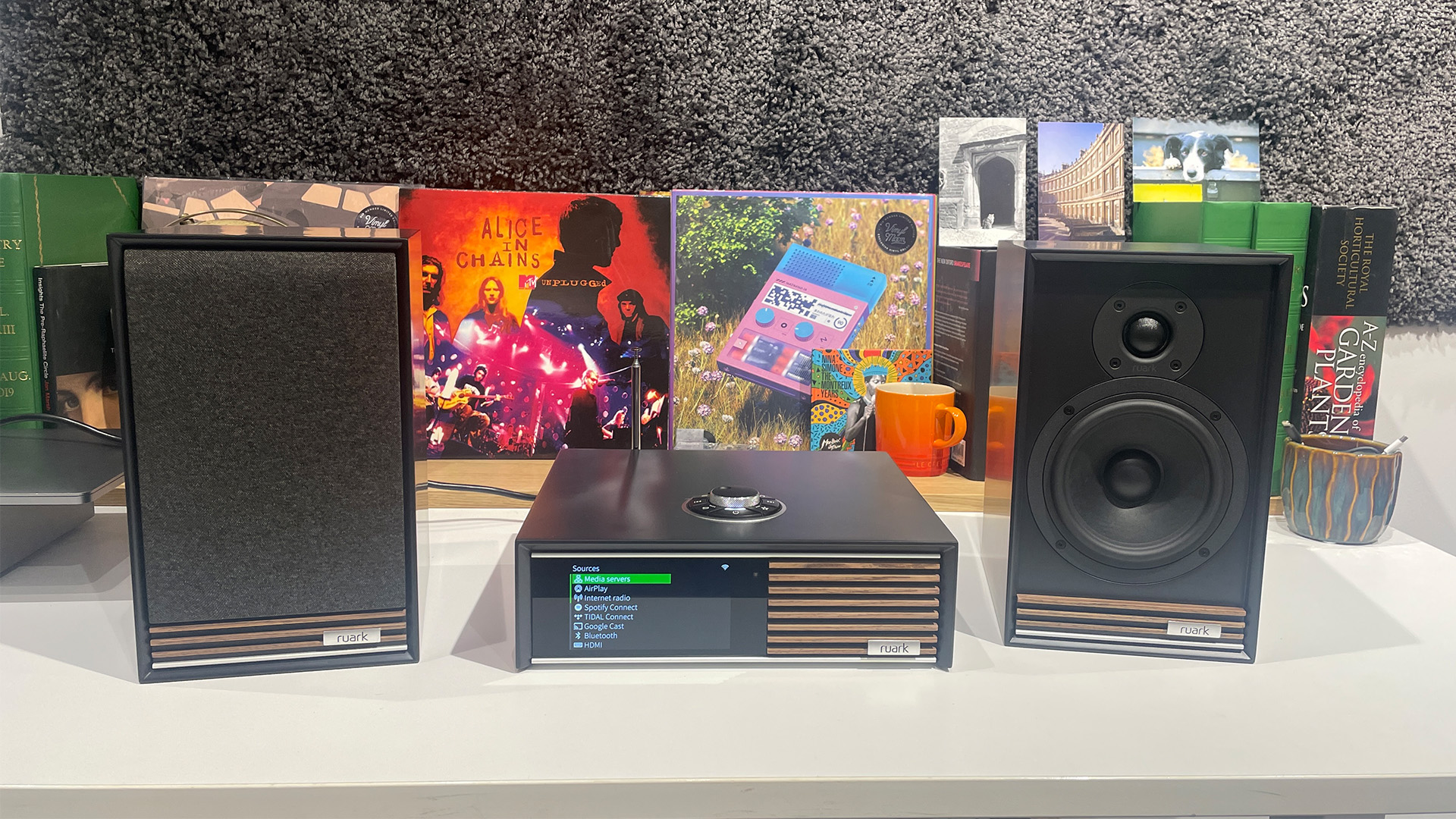
In terms of speaker matching, we do get a sense that the R610 is holding back a touch with our reference pair; that it isn’t sounding quite as free and lively as we would expect.
We swap our Epos speakers for the mid-priced Bowers & Wilkins 606 S3 – all of the R610’s positive qualities still remain, but this combination still sounds rather reserved.
It isn’t until we plug in the Ruark Sabre-R speakers that the R610 truly shines.
The R610 comes to life now. There is a greater spring in its step, the mid to high frequencies have greater shine and sweetness, and we notice a clear step up in rhythmic agility and fluidity.
Vocals in particular sound far more immediate and natural – you can hear greater nuance in the emotion and inflections in voices when listening through the Sabre-R speakers.
Overall, it’s a more engaging and dynamic sound. The Sabre-R speakers are clearly tuned to match the R610, so it makes sense that they sound their best when paired together.
Our dedicated Sabre-R review goes into greater detail about these small speakers, but don’t be deterred by their four-star rating – they and the R610 fit together like two pieces of a puzzle. They flow together in perfect harmony, highlighting each other’s strengths and delivering a cohesive performance.
If you are considering buying the R610, then the Sabre-R should be considered its most natural pairing.
If space is tight and you need an even smaller pair of speakers, then the titchy Neat Iota II are a good fit – their energy and dynamism suit the R610 well, although they’re perhaps not quite as refined as the Ruark pairing.
Luckily, you can buy the Sabre-R and R610 as a bundle in the UK, while you can purchase them separately in other territories.
The Sabre-R speakers cost £699, so together with R610, the total system will set you back £1899. We just wish there was a little discount when you bought the pair as a bundle.
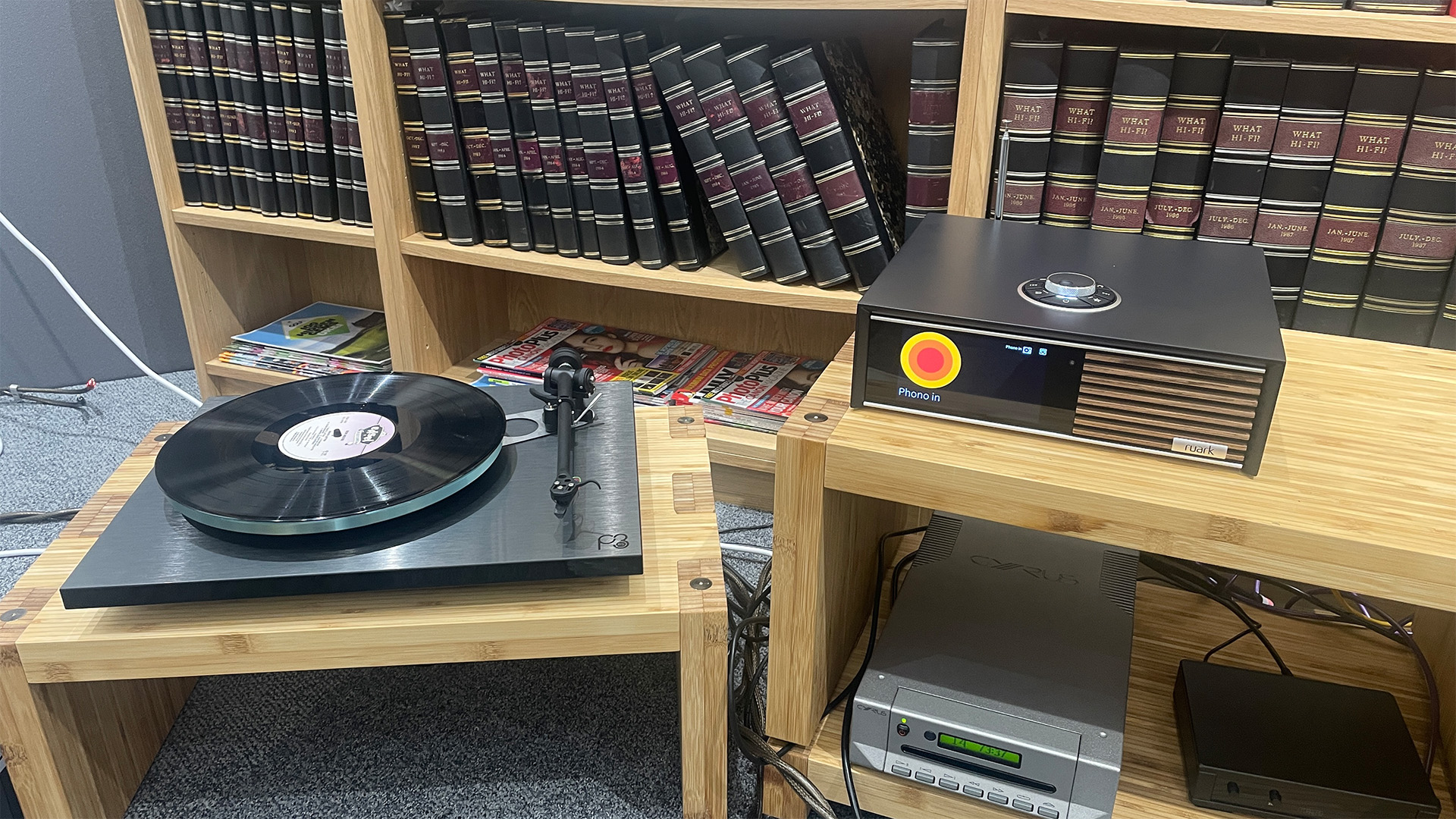
Elsewhere, the R610’s sound is consistent throughout the various source inputs. The built-in phono stage is of decent quality, which isn’t always a guarantee in streaming amplifiers. We would recommend the Rega Planar 2/Nd3 or Pro-Ject Debut Evo 2 as good options for the R610.
The streaming amplifier is sympathetic to different recording qualities but doesn’t make too much of a fuss about it, either. It conveys hi-res albums streamed from our Naim server with the same care and attention as with lossy Bluetooth streams from an iPhone.
Regardless of how you listen, the R610 doesn’t rob you of experiencing the shifting mood and feel of a song. Ruark simply tries to deliver the music as authentically as possible, so we can enjoy the core intent of the music.
For this type of product, which juggles so many different jobs, it’s a very capable performer. The R610 is a clear step up in performance over the Award-winning Technics SA-C600 (now available for around £760).
There are many streaming amplifiers across the price ranges that get close to offering great performance alongside ample features and specifications, but can’t quite hit the spot in every aspect.
With the R610, Ruark makes it look – and sound – easy. There is an effortless quality with which it delivers music, especially when paired with the Ruark Sabre-R speakers, that is wonderfully pleasing to listen to.
Verdict
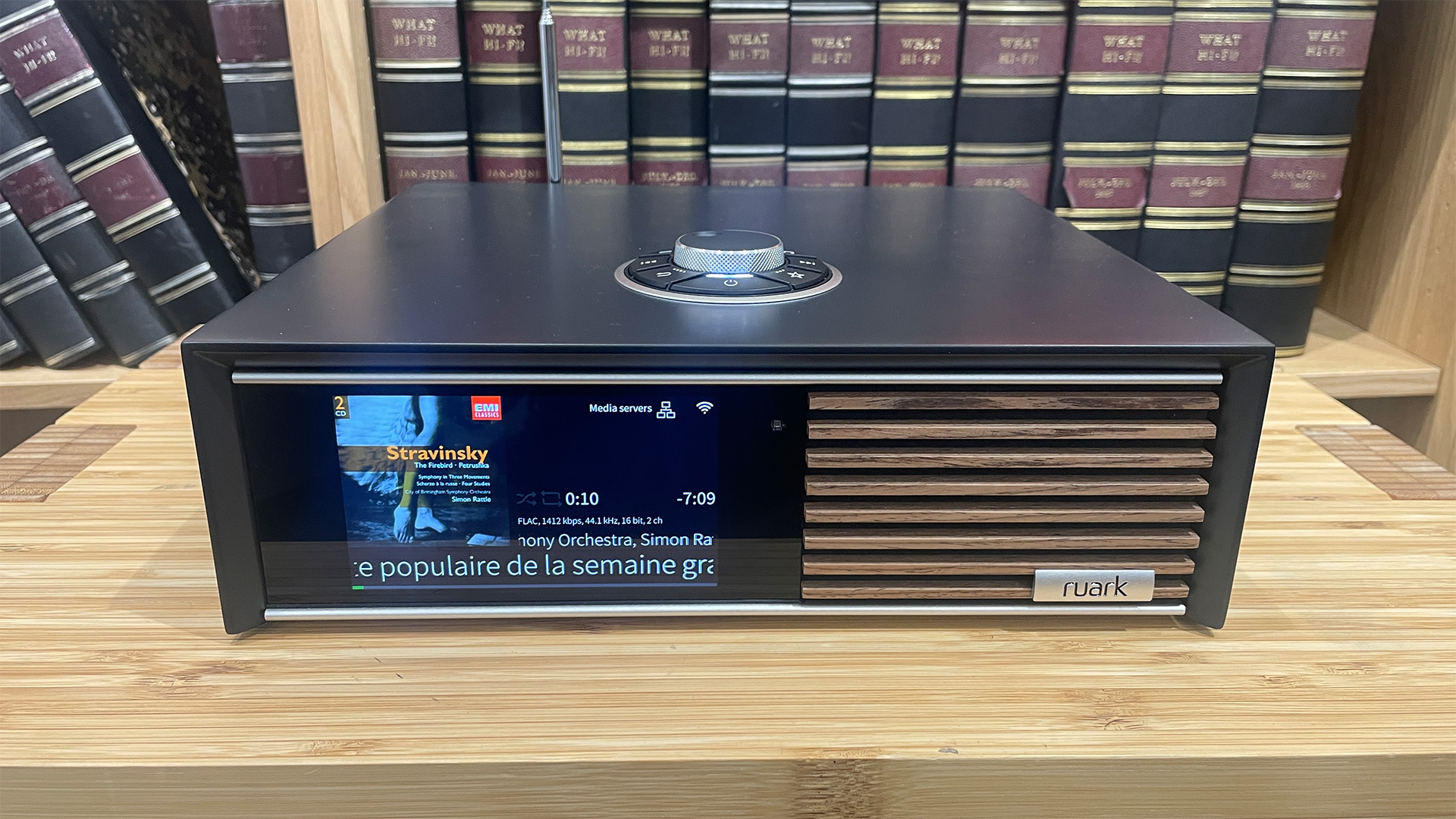
If you want a substantial step up that gets closer to the sound of separates hi-fi, we would recommend the pricier Naim Uniti Atom (£2300 / $3799 / AU$5750).
But the Ruark R610 streaming amplifier is a fine example of what can be accomplished in such a compact, multi-faceted form, and at this price.
The R610 is a gorgeous piece of design, it’s lovely to use and however you listen to music – vinyl, streaming, CD, radio – it delivers an engaging, convincing performance.
Review published: 27th June 2025
SCORES
- Sound 5
- Features 5
- Build 5
MORE:
Read the Ruark Audio Sabre-R speakers review
Also consider the Technics SA-C600
Best hi-fi systems 2025: CD, vinyl and streaming music players for the home

Kashfia is the Hi-Fi and Audio Editor of What Hi-Fi? and first joined the brand 13 years ago. During her time in the consumer tech industry, she has reviewed hundreds of products (including speakers, amplifiers, turntables and headphones), been to countless trade shows across the world and fallen in love with hi-fi kit much bigger than her. In her spare time, Kash can be found tending to an ever-growing houseplant collection and shooing her cat Jolene away from spinning records.
- Ketan BharadiaTechnical Editor
You must confirm your public display name before commenting
Please logout and then login again, you will then be prompted to enter your display name.
